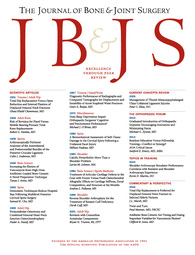
TRAUMA
Improvement in disability did not significantly differ between 3D and 2D planning for DRF malunion
This report has been verified
by one or more authors of the
original publication.
J Bone Joint Surg Am. 2018 Jul 18;100(14):1191-1202
40 patients with a distal radius malunion were randomized to either 3-dimensional (3D) or 2-dimensional (2D) preoperative planning for corrective osteotomy. The primary outcome was the change in patient-reported disability on the Disabilities of the Arm, Shoulder, and Hand (DASH) questionnaire over 12-month follow-up; secondary measures included visual analog scales for pain and satisfaction, the Patient-Rated Wrist Evaluation, and radiographic assessment of deformity correction. No significant differences between groups were noted in the changes of the DASH, PRWE, VAS pain, or VAS satisfaction after 3, 6 or 12 months.
Unlock the full ACE Report
You have access to {0} free articles per month.Click below to unlock and view this {1}
Unlock NowCritical appraisals of the latest, high-impact randomized controlled trials and systematic reviews in orthopaedics
Access to OrthoEvidence podcast content, including collaborations with the Journal of Bone and Joint Surgery, interviews with internationally recognized surgeons, and roundtable discussions on orthopaedic news and topics
Subscription to The Pulse, a twice-weekly evidence-based newsletter designed to help you make better clinical decisions
Exclusive access to original content articles, including in-house systematic reviews, and articles on health research methods and hot orthopaedic topics
Or upgrade today and gain access to all OrthoEvidence content for just $1.99 per week.
Already have an account? Log in


Subscribe to "The Pulse"
Evidence-Based Orthopaedics direct to your inbox.
{0} of {1} free articles
Become an OrthoEvidence Premium Member. Expand your perspective with high-quality evidence.
Upgrade Now













































































